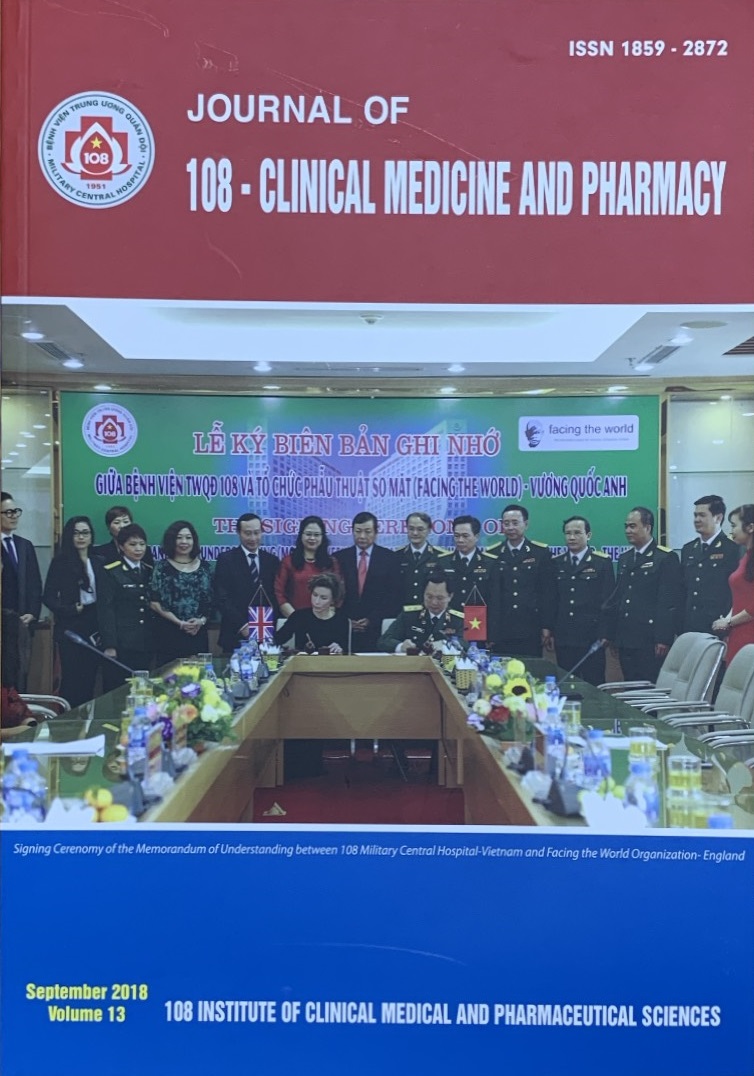Rhythm characteristics of types of paroxysmal supraventricular tachycardia attack in young and elderly patients undergoing cardiac electrophysiology
Main Article Content
Keywords
Tóm tắt
Objective: Describe of rhythm characteristics of types of paroxysmal supraventricular tachycardia (PSVT) attack in young and elderly patients undergoing cardiac electrophysiology. Subject and method: Cross-sectional descriptive and prospective study. 182 patients diagnosed with PSVT attack underwent cardiac electrophysiology in Vietnam Heart Institute from January 2014 to May 2017. The patients were divided into two groups: Group I (n = 93): Young patients (< 60 years old), group II (n = 89): Elderly patients (≥ 60 years old). Result: The PSVT attack was quite common in middle-aged. AVNRT type was more commonly seen than AVRT attack, typical AVNRT were more prevalent than atypical AVNRT, orthodromic AVRT was more common than antidromic AVRT. The proportion of combined AVRT attack and WPW syndrome in the elderly group were significantly higher than that in the young group (p<0.0001). The heart rate on out of attack ECG in the young patient group was significantly higher than that in the elderly patient group (p<0.0001, r = -0.326). The AFib was quite common in PSVT attacks, with the rate of elderly patients having AFib attacks was higher than that of young patients (p<0.05); The AFib was common in AVRT attacks (60%) while it was not common in AVNRT attacks (4.7%). The branch block was seen in 6.0%. Conclusion: The likelihood of having AVNRT was higher compared to AVRT attacks, typical AVNRT were more prevalent than atypical AVNRT, orthodromic AVRT was more common than antidromic AVRT, WPW syndrome was associated with PSVT attacks, there was a moderately and negatively correlated between the heart rate and age. The AFib was quite common in PSVT attacks, with the rate of elderly patients having AFib attacks was higher than that of young patients. The AFib was common in AVRT attacks.
Keywords: Rhythm characteristic, PVST attack, cardiac electrophysiological, young patients, elderly patients.
Article Details
Các tài liệu tham khảo
2. Yangni N’Da’ O, Brembilla-Perrot B (2008) Clinical characteristics and management of paroxysmal junctional tachycardia in the elderly. Archives of Cardiovascular Diseases 101(3): 143-148.
3. Chen SA, Chiang SA, Yang CJ et al (1994) Accessory pathway and atrioventricular node reentrant tachycardia in elderly patients: Clinical features, electrophysiologic characteristics and results of radiofrequency ablation. J Am Coll Cardiol 23: 702-708.
4. Bottoni N, Tomasi C, Donateo P et al (2003) Clinical and electrophysiological characteristics in patients with atrioventricular reentrant and atrioventricular nodal reentrant tachycardia. Europace 5(3): 225-229.
5. Schwartz JB (1999) Cardiovascular function and disease in the elderly. Northwestern University: 1-6.
6. Kistler PM, Sanders P, Fynn SP (2004), Electrophysiologic and electroanatomic changes in the human atrium associated with age. Journal of the American College of Cardiology 44(1): 109-116.
7. Ratner B (2009) The correlation coefficient: Its values range between +1/-1, or do they?. Journal of Targeting, Measurement and Analysis for Marketing 17(2): 139-142.
8. Muhammad A, Abdul M, Amir H (2007) Comparison of efficacy of intravenous adenosine and verapamil in acute paroxysmal supraventricular tachycardia in adults. JSZMC 4(30): 492-496.
9. Hiroko N, Naohito Y, Kenzo H et al (1998) Heterogeneity of anterograde fast-pathway and retrograde slow-pathway conduction patterns in patients with the fast-slow form of atrioventricular nodal reentrant tachycardia: electrophysiologic and electrocardiographic considerations. Journal of the American College of Cardiology 32(6): 1731-1740.
10. Joerg L, Julia S, Ralph S (2015) Electrophysiological studies in patients with paroxysmal supraventricular tachycardias but no electrocardiogram documentation: Findings from a prospective registry. EP Europace 17(5): 801-806.
11. Stellbrink C, Diem B, Schauerte P et al (2001) Differential effects of atropine and isoproterenol on inducibility of atrioventricular nodal reentrant tachycardia. J Interv Card Electrophysiol 5(4): 463-469.
 ISSN: 1859 - 2872
ISSN: 1859 - 2872
